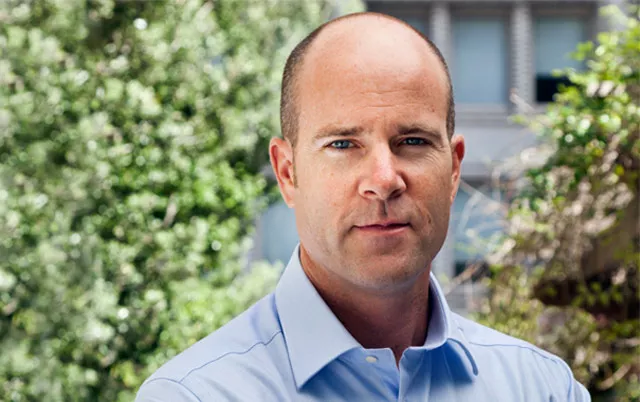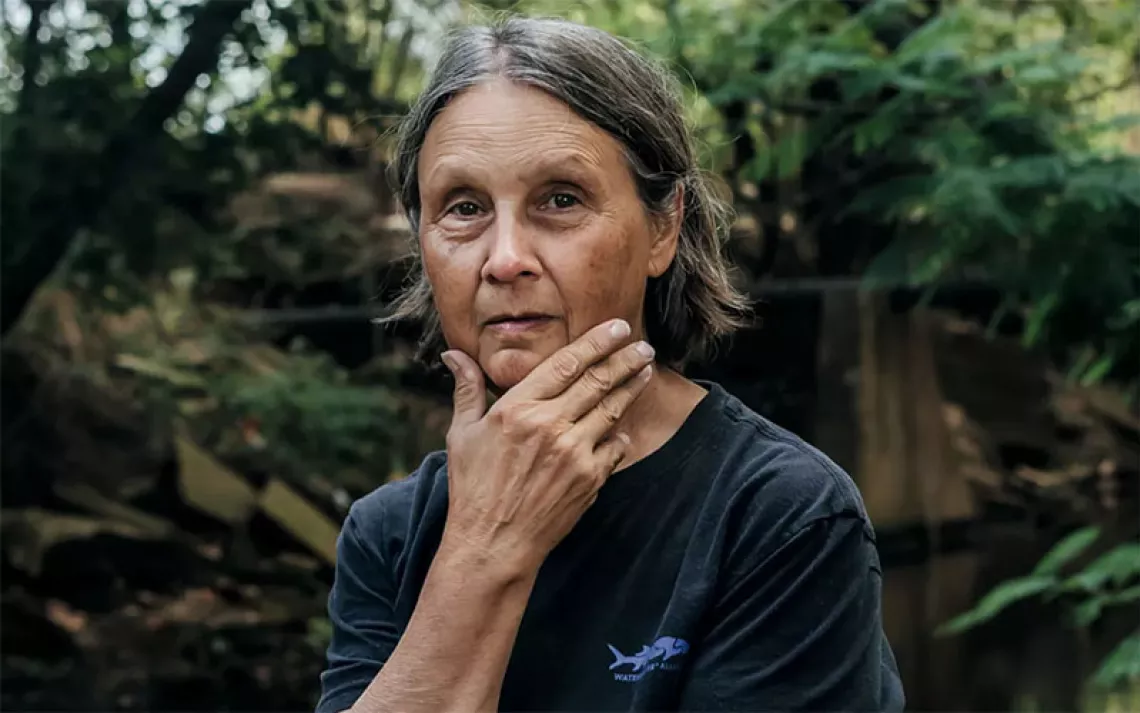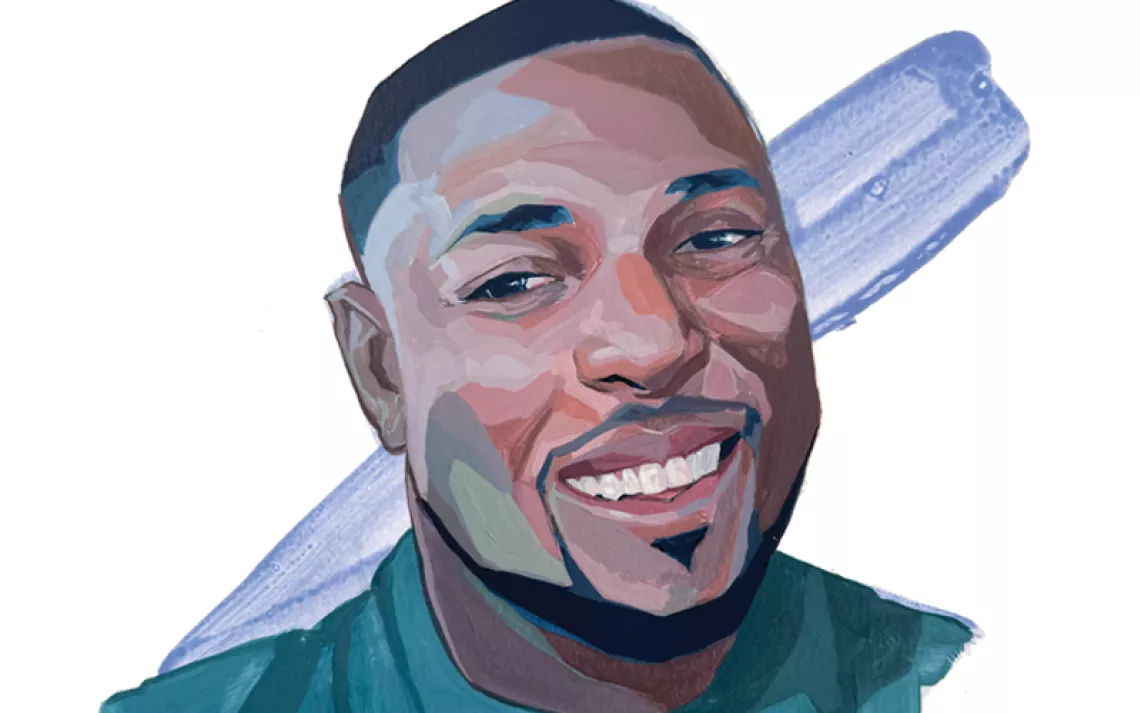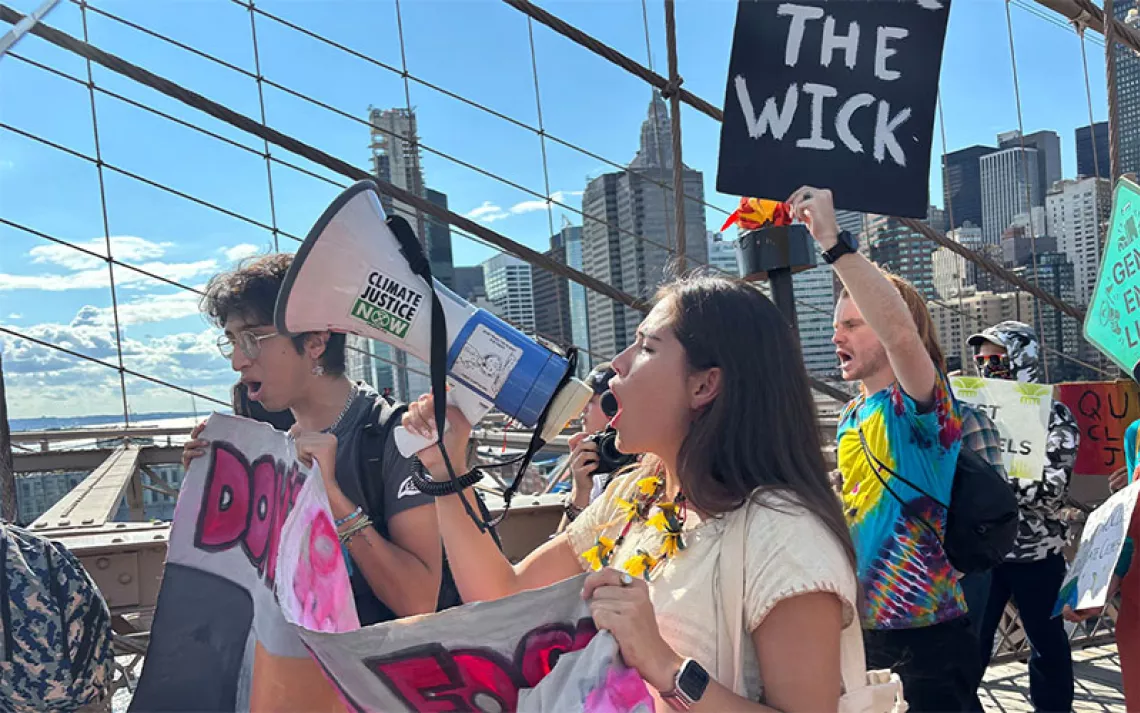Generation Cool
Optimists. Activists. Leaders.

Photo by Henrik Kam
Climate disruption may be the most daunting challenge humanity has ever faced. It's one we'll never meet without the energy and enthusiasm of young people. That's because they're our best source of fresh ideas. They don't buy the notion that we have to keep doing something a certain way simply because that's how we've always done it. Young people are also more likely to be concerned about climate disruption.
Polls show them to be the strongest supporters of investing in clean energy solutions like solar and wind power—even during challenging financial times. And as the growing fossil fuel divestment movement profiled in this issue shows, they're ready to act to preserve their future.
Like the Greatest Generation before them, they'll be remembered for their courage and responsibility in the face of an immense challenge. Call them Generation Cool.

They are optimists who believe that we still have time to do something about climate disruption but know that we need to act quickly. They're less confident, though, that U.S. leaders can be counted on to follow suit.
Think about it: The only place a young person today may have seen Congress enact positive environmental legislation is on the History Channel. Even Barack Obama, whom the youth vote helped send to the White House and who has done more than anyone in American history to respond to the climate crisis, still endorses an "all of the above" energy policy that could keep dirty fuels in play for decades.
Students are changing that timetable. If the president and Congress won't move us beyond dirty energy, they'll do it themselves. And today's campus-divestment activist could well be tomorrow's congressional climate-action champion.
Even when they aren't on the front lines of climate and clean energy activism, the members of Generation Cool are making a huge difference simply through their lifestyle choices. People born between 1983 and 2000 (now the largest generation in U.S. history) are more likely to choose to live in urban, walkable neighborhoods. They're also more open to transportation options like cycling, car shares, and public transit.
As a result, they drive less—a lot less. They've reversed a 60-year run of increases in per-capita driving in the United States. According to a study released this year by U.S. Public Interest Research Groups, U.S. per-capita vehicle miles traveled have decreased to 1996 levels. That decline is led by young people ages 16 to 34, who drove 23 percent fewer miles on average in 2009 than the same cohort did in 2001. If this trend continues—and it appears that it will—U.S. oil consumption and carbon dioxide emissions will drop significantly, especially as stronger fuel-economy standards kick in.One factor that may contribute to young people driving less is their online, social network-centric lifestyle. But that plugged-in life has a downside: Generation Cool doesn't get outdoors much. As Sierra Club members have known since John Muir's day, people who spend time in nature are far more likely to fight to preserve it. That's one reason why Club volunteers work so hard to help kids get outside. It's also why my wife and I take our own kids camping whenever we can. In fact, this summer we went on one of those classic family road trips through some of the iconic wild places of the American West. My own parents took me and my siblings on a similar trip when I was 13. I've never forgotten seeing the Grand Canyon for the first time, so imagine how I felt showing it to my own kids.
You guessed it: Cool.
 The Magazine of The Sierra Club
The Magazine of The Sierra Club



